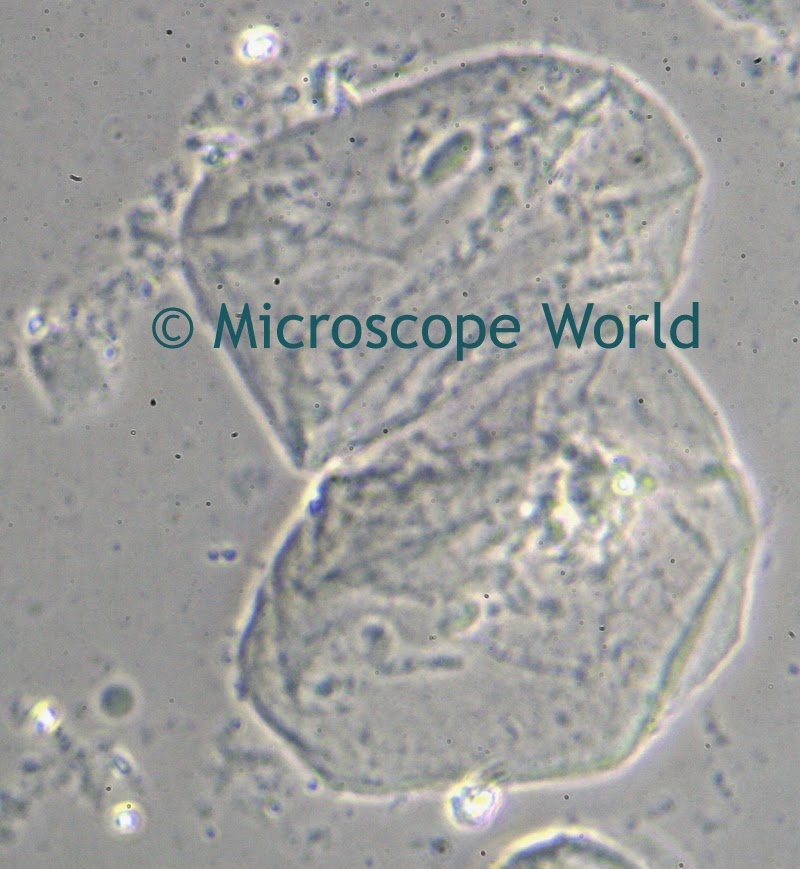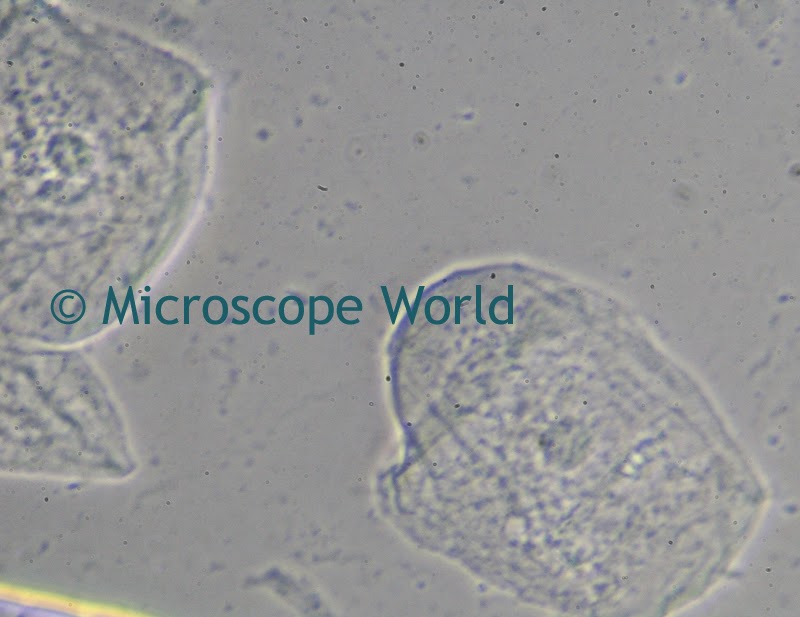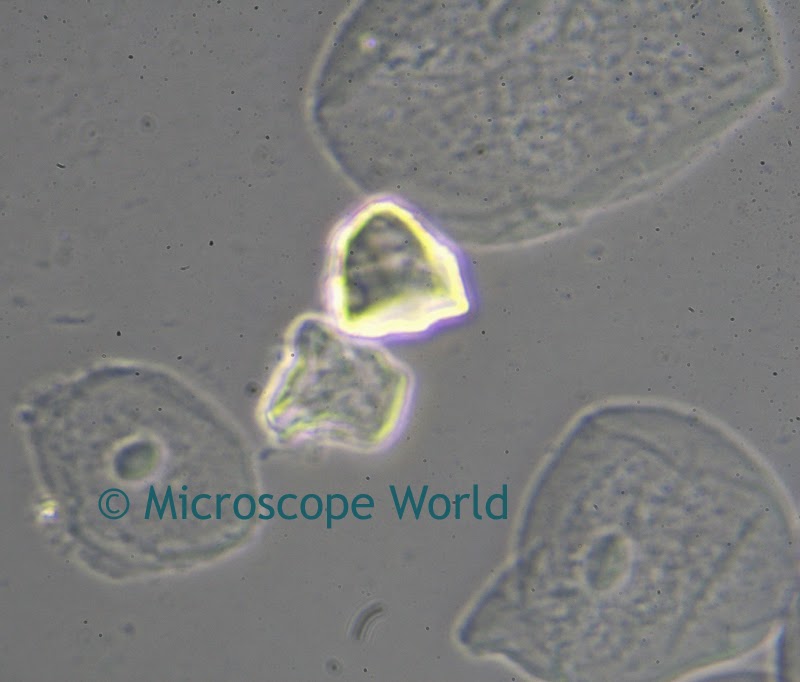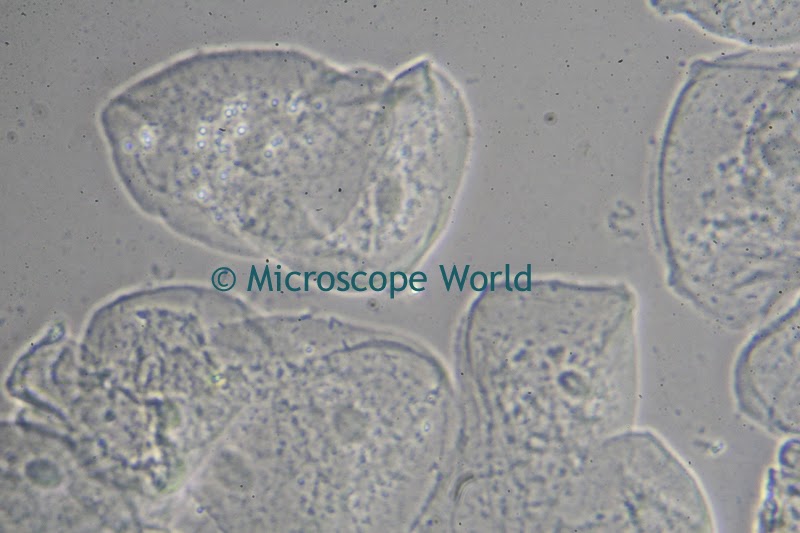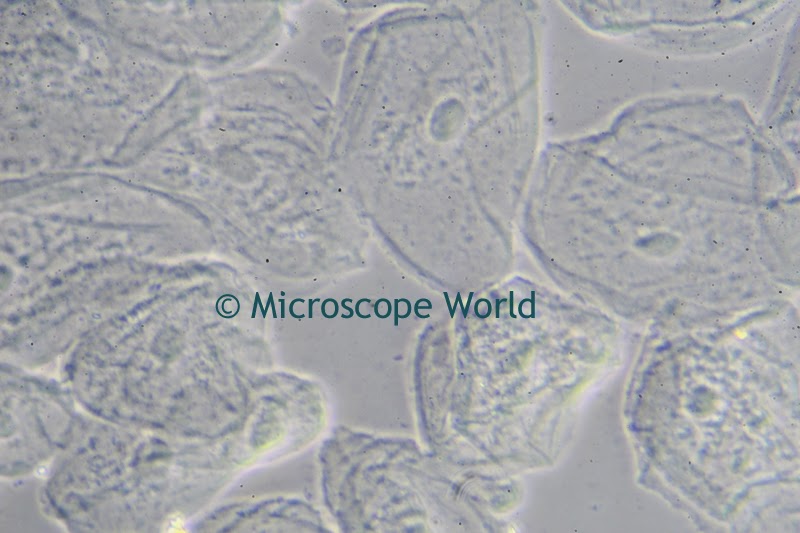Cheek cells are one of the easiest cells to view under a microscope, since everyone comes equipped with them! Take a Q-Tip and swab the inside of your cheek. Rub the moist Q-Tip on a blank glass microscope slide and place a cover slip on top.
Using a biological microscope, view the slide at the lower magnification first and then move up to higher magnifications. If you have access to a phase contrast microscope you will be able to view even more detail in the cheek cells.
The following images were captured using the U2 biological microscope and a 40x Phase Contrast Objective lens and phase contrast condenser.
Using a biological microscope, view the slide at the lower magnification first and then move up to higher magnifications. If you have access to a phase contrast microscope you will be able to view even more detail in the cheek cells.
The following images were captured using the U2 biological microscope and a 40x Phase Contrast Objective lens and phase contrast condenser.
